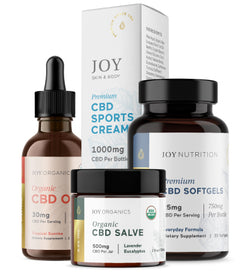
Motivation. On some days, you have it—and you’re an unstoppable steamroller, leveling all your to-dos (and more) way before 6 pm. But on other days…you don't. Just getting out of bed without repeatedly hitting snooze deserves a celebration. While it's perfectly normal for your motivation levels to ebb and flow, that doesn’t mean you can’t help yourself have more productive days.
How? It comes down to a special neurotransmitter called dopamine.
Dopamine: the “motivation neurotransmitter”
In the past, scientists thought that dopamine regulated pleasure and reward, that our bodies released it only once we've achieved something that satisfies us. But that’s been upended by recent research. A large body of evidence shows that dopamine is more closely related to the anticipation of a reward than the actual obtainment. Meaning? Dopamine is a key driver of motivation—it encourages you to act.
How to boost your dopamine (and, thus, motivation) levels
First things first: ensure your body has sufficient baseline dopamine levels. Think about it this way: Your goal is to create well-timed "dopamine waves" to surf through your tasks effortlessly, but you can't do that if you only have a pond's worth of water (dopamine) instead of a sea’s worth.
Optimize baseline dopamine levels
Here are four things you could do to establish a healthy baseline dopamine level.
1. Get some sun:
Like all bodily systems, research shows that our dopamine transmission is regulated by the circadian rhythm, an internally-driven 24-hour “clock” that resets daily in response to the sun’s light/dark cycle. To help your body produce the dopamine it needs for the day, expose yourself to anywhere between 10 to 30 minutes of sunlight each morning. Of course, be wise about your exposure: do so before 10 am (note: the sun's rays are strongest between 10 am and 4 pm) and apply a broad spectrum sunscreen with an SPF of at least 15.
2. Eat tyrosine-rich foods:
Tyrosine is a nonessential amino acid your body uses to make dopamine. Eating tyrosine-rich foods—such as red meats, nuts, and fermented cheese—is thus crucial for sustaining a healthy baseline level of dopamine.
3. Limit artificial light exposure at night:
Abnormal light exposure patterns—e.g., crafting passive-aggressive emails to that one annoying co-worker at 10 pm on your brightly-lit laptop—throw your dopamine-regulating circadian rhythm out of whack, potentially suppressing the amount of circulating dopamine in your system. So, dim your lights once nighttime approaches. And if you must use digital screens, turn on the “dark mode” and whip out those blue-light-blocking glasses.
4. Take caffeine:
Love your coffee and tea? Then, you’ll be glad to know caffeine has been shown to increase dopamine release and dopamine receptor availability (enhancing your body’s sensitivity to dopamine’s effects). That said, more is not always better. Limit your consumption to 400mg of caffeine daily and cut off your intake at least six hours before bedtime for a good night’s sleep.
Create dopamine surges
OK, so how should you create those "dopamine waves"? Here’s a non-exhaustive list:
1. Cold exposure:
Take a cold bath. Past research shows that doing so could ramp your dopamine levels by 250%! But how cold should you go? This 2000 study suggests the hottest you could go is 60°F (14°C).
2. Meditate:
Many studies have found meditation programs effective in stimulating increased dopamine release. So, make time in your day for a meditation session, ideally before you begin working on your tasks
3. Physical activity:
Exercise is not just excellent for your physical health; it also increases dopamine production. One way you could leverage this is to exercise in the morning—and better still if you do it outdoors, as that’ll help you get that much-needed sunlight exposure.
4. Reward yourself intermittently and randomly:
You’re at a casino. Your pockets get lighter most of the time, but there will always be those sporadic wins that keep you gambling. Apply the same principle when rewarding yourself. Celebrate your wins (e.g., completing a task), but not always.
5. Make the effort the reward:
Your brain releases dopamine in anticipation of completing a task. But what happens if it’s a huge task that'll take you days, weeks, or even months to check off? How can you stay motivated? That's where cognitive reframing comes into play—think of your hard work as the reward instead of the actual completion. Put another way: prioritize the journey instead of the destination.
Hannah Smith is Joy Organics Director of Communications. She is driven by her passion for providing clear and accessible wellness and CBD education. In 2015, she received her BA in Media, Culture and the Arts from The King’s College in New York City and before Joy Organics, worked as writer and photographer in the Middle East and North Africa. Her work has been featured on Forbes, Vice, Vox, Denver Post, and the Coloradoan.








